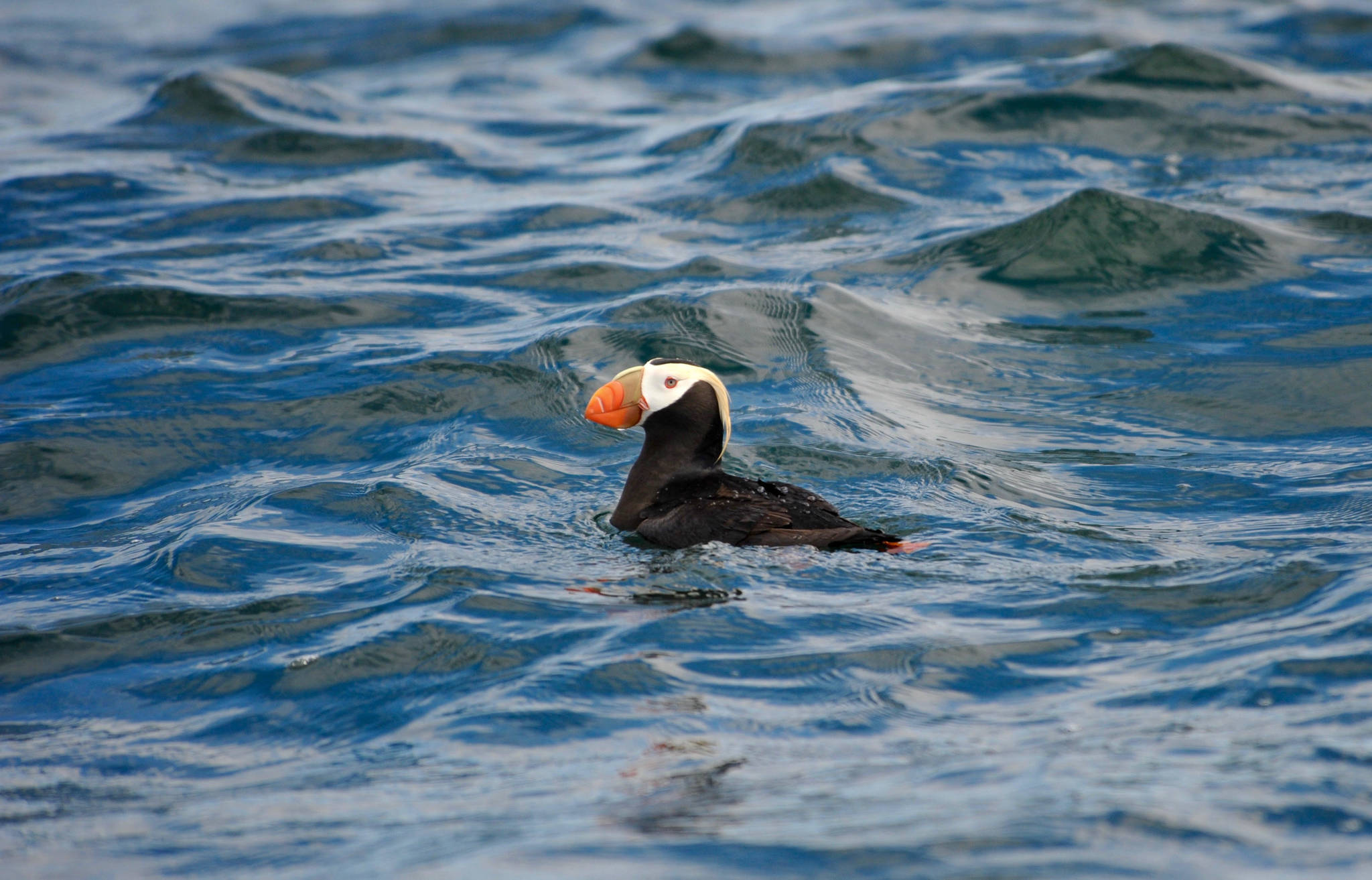Too many possible endangered species, too little time.
That’s the reality at Washington Department of Fish and Wildlife, where staff are assessing candidates for the state’s endangered species list, according to Joe Gaydos, science director of the SeaDoc Society.
Staff at SeaDoc, a scientific nonprofit based on Orcas Island, has stepped in to ease the burden of the agency’s backlogged candidates by writing reports needed to decide if species will be classified as threatened or endangered.
WDFW, said Gaydos, is underfunded and understaffed, so SeaDoc raised private funds to hire a scientist to help write reports, normally done by state employees, in a one-of-a-kind relationship.
“This is a public-private partnership that hasn’t been done anywhere else in the country,” he said.
The partnership started in 2010, when SeaDoc staff raised roughly $44,000 to hire scientist Thor Hanson to co-write a status report, along with a WDFW staff member, on the tufted puffin. The San Juan Island seabird had been backlogged on the agency’s endangered species review list for 17 years.
A status report outlines species’ historical and current populations, and is the first scientific account needed to determine if an animal should be classified as threatened or endangered under Washington law. Gaydos said he doesn’t know of another nonprofit that has written status reports for WDFW.
The same year the status report was published, the tufted puffin was added to Washington’s endangered species list, after the state process of a scientific peer review and public comment period. Although the species had been a candidate for review since 1998, the 2015 paper was the first status report completed for the tufted puffin.
“There are so many waiting candidate species, and [WDFW] doesn’t have the staff power to get through them in a timely fashion,” said Hanson. “This [report] moved things along faster for puffins.”
Historically, locals have most likely seen tufted puffins in the summer, when the seabirds have visited the islands to mate. During breeding season, the birds have their iconic plumage of black bodies and white faces, as well as bright orange bills.
However, according to the status report, the seabirds’ population is dwindling; in the early 1900s, there were an estimated 25,000 tufted puffins in Washington, but by 2009, there was an estimated 2,958.
If 2015’s 8.9 percent annual rate of decline would continue, states the report, Washington’s population could be wiped out in about 40 years.
The private-public partnership formed between SeaDoc and WDFW may start by repopulating the tufted puffin, said Gaydos, but could later help the agency’s long list of other possible endangered species. According to a different SeaDoc report, published in 2015, there were 112 species waiting for evaluation to possibly be added to the state’s endangered species list.
That article states that a decline in WDFW funds over the last nine years had delayed status preparations and recovery activities. Some species continued to decline during their extended waiting periods.
Today, SeaDoc staff has rehired Hanson, using private funds, to co-write the recovery plan for the tufted puffin with a WDFW staff member. This is the next step after designating a species as endangered in Washington, said Gaydos, and is typically written by state employees, though he has heard of nonprofits assisting.
The recovery plan, said Hanson, will outline steps needed to increase the seabird’s population, like improving prey availability and protecting nesting habitats. It’s also the pre-curser to boots on the ground.
“Animals don’t come back just because you list them. You need a recovery plan,” said Gaydos. “You need a list of actions before we can get people on the ground.”
According to the tufted puffin’s status report, the last San Juan breeding site for the seabird was identified in 1990 on the outer island of Hall Island, near Lopez. While islanders can still spot tufted puffins in the Salish Sea, like on the southern tip of Lopez, they no longer breed on county land, said Gaydos. The closest breeding spots to the San Juans are on Smith Island and Protection Island in the Strait of Juan de Fuca. The report also states that the number of breeding colonies in Washington decreased 46 percent from 1978 to 1984, and 57 percent before that, from 1886 to 1977.
Reasons for the decline include the reduction of prey availability, changing climate conditions and human disturbance. An estimated 9 percent of the population was lost after a Japanese fishing vessel and a Chinese freighter collided in 1991, releasing fuel oil and diesel fuel across the shores of Washington.
Population shortfalls are greater in the southern portion of the seabird’s nesting habitats, like in Washington, compared to the northern parts, like in Alaska, said Hanson. Though the seabird is on the list to be reviewed for the federal endangered species list, it has yet to be added.
The state’s recovery plan for the tufted puffin is expected to be published this spring.




